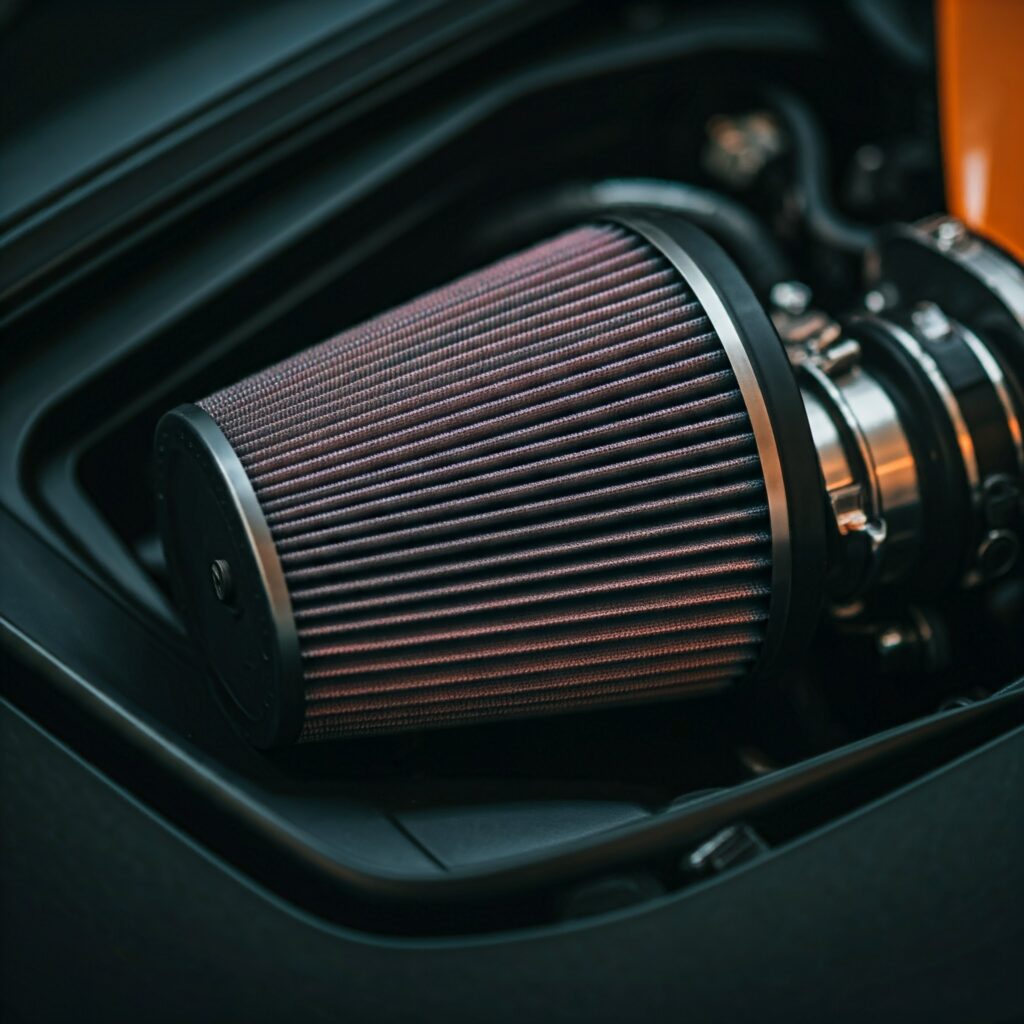Changing your car’s air filter is a simple task that can have a big impact on your vehicle’s performance and fuel efficiency. The air filter prevents dirt, debris, and other particles from entering your engine, ensuring smooth combustion and protecting your engine components. Over time, the air filter can become clogged, reducing airflow and causing your engine to work harder, leading to poor fuel economy and potential engine damage. Here’s an easy guide on how to change your car’s air filter.

Why Change Your Car’s Air Filter?
Your car’s engine needs a steady supply of clean air to run efficiently. The air filter ensures that only clean air enters the engine for combustion. A clogged or dirty air filter can result in:
- Reduced fuel efficiency: Less airflow means the engine works harder to get the power it needs.
- Poor engine performance: Clogged filters can cause hesitation, rough idling, or even engine misfires.
- Increased emissions: A dirty filter can lead to incomplete combustion, resulting in higher exhaust emissions.
- Engine damage: Without proper filtration, dirt and debris can enter the engine, causing long-term damage to sensitive components.
Changing your air filter regularly—usually every 12,000 to 15,000 kilometers—will keep your car running smoothly, improve gas mileage, and extend the life of your engine.
What You’ll Need
Before you begin, you’ll need a few basic items:
- Replacement air filter: Make sure to check your car’s manual for the correct size and type.
- Screwdriver or socket wrench (if needed for removal).
- Clean gloves: Optional but helpful for keeping dirt off your hands and the engine bay.
- A flashlight: For better visibility if the air filter compartment is hard to see.
Step-by-Step Guide to Changing Your Car’s Air Filter
1. Locate the Air Filter Compartment
The air filter is usually housed in a black plastic box located near the front of the engine bay. To find it, look for a large tube connected to the engine (the intake hose), as the air filter is typically connected to this tube. If you’re having trouble locating it, refer to your car’s owner’s manual.
2. Open the Air Filter Compartment
Once you’ve found the air filter compartment, you may need to remove a few screws or clips to open it. Some air filter boxes can simply be unclipped or opened by hand, while others may require a screwdriver or socket wrench. Take your time to avoid damaging any components.
3. Remove the Old Air Filter
After opening the compartment, carefully lift out the old air filter. Pay attention to how the filter is positioned so you can easily install the new one in the same way. If the filter is difficult to remove, gently wiggle it or use a soft brush to loosen any dirt or debris around the edges.
4. Inspect the Air Filter Compartment
Before installing the new filter, take a moment to inspect the compartment. Look for any signs of dirt, debris, or damage. You can use a damp cloth or a vacuum to clean the area, but be sure to avoid pushing any dirt into the engine.
5. Install the New Air Filter
Now it’s time to install the new air filter. Carefully place the filter into the compartment, ensuring it fits snugly and is properly aligned. Make sure it’s seated correctly, with no gaps around the edges.
6. Close the Air Filter Compartment
Once the new filter is in place, close the air filter box and reattach any screws, clips, or fasteners that were holding it together. Make sure everything is securely fastened.
7. Test the Engine
After replacing the filter, start your car’s engine and listen for any unusual noises. The engine should run smoothly, and you may notice improved acceleration or smoother idling.
Tips for Maintaining Your Air Filter
To get the most out of your new air filter and keep your engine running efficiently, follow these simple maintenance tips:
- Check the air filter regularly: If you drive in dusty or polluted areas, check your filter every 5,000 to 7,000 kilometers.
- Replace the air filter on schedule: Stick to the recommended replacement schedule in your car’s manual—usually every 12,000 to 15,000 kilometers—or sooner if the filter looks dirty.
- Clean the area around the filter: Keeping the air filter compartment clean ensures that no dirt or debris gets into the engine when you replace the filter.
Conclusion
Changing your car’s air filter is a quick and simple task that can have a big impact on your car’s performance, fuel economy, and overall health. By replacing the air filter regularly, you’re ensuring that your engine gets the clean air it needs for optimal performance, while also extending the life of your vehicle. With just a few simple steps, you can improve your car’s efficiency and enjoy a smoother driving experience.
